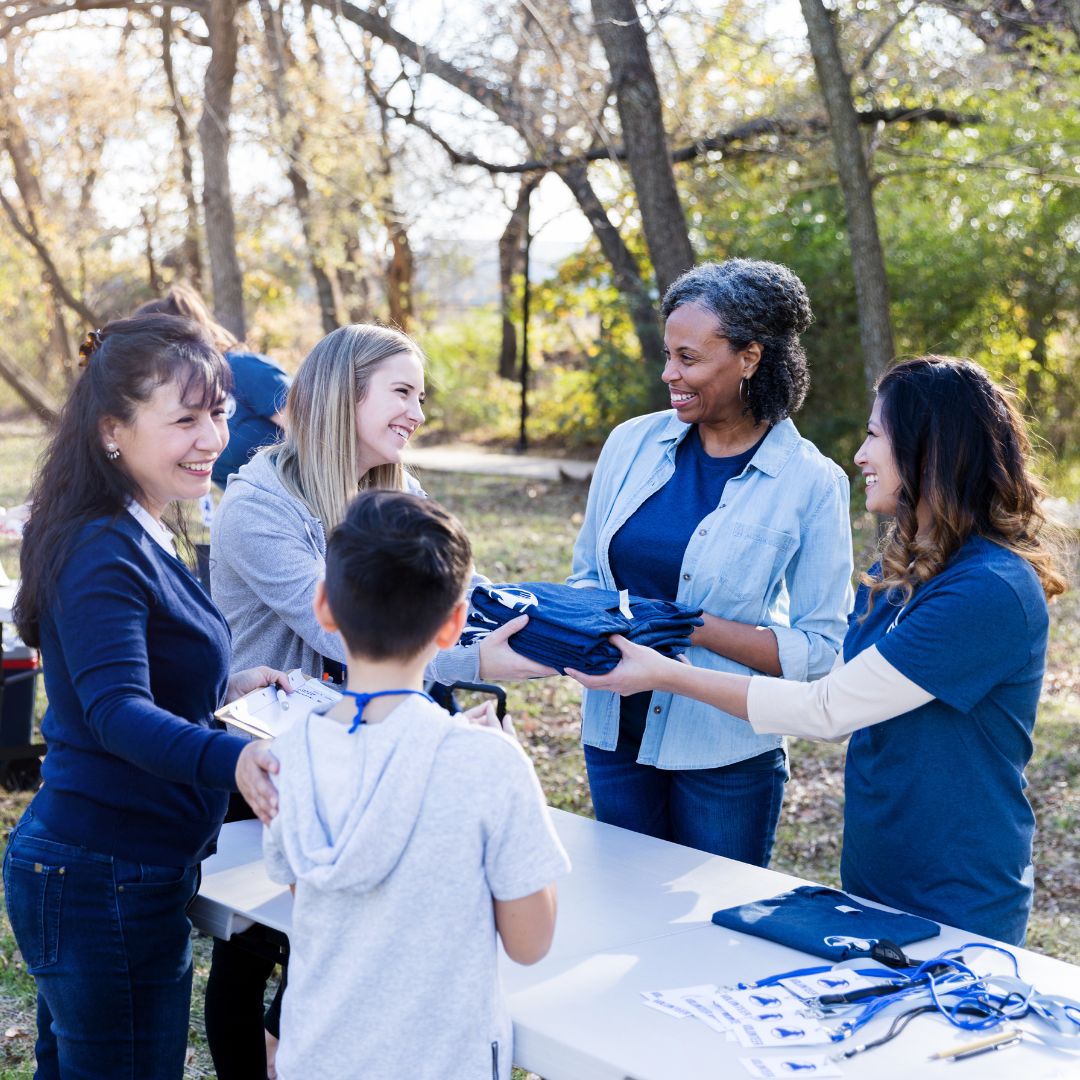Bridging the Gap: How Community Connection Improves Title 1 Education
When it comes to Title 1 education, you’ll likely face unique challenges as an educator in providing quality education to your students. But through community connection and recognizing students’ lived experiences, you can help in bridging the gap between Title 1 education and the highest-achieving school districts.
By giving students the tools to build strong connections between self, community, and the greater world, you can uplift them to greater outcomes and help them make a real investment in their learning paths.
In this article, we’ll explore the various benefits of including community connection in Title 1 education.
We’ve also provided practical strategies for building lasting partnerships between schools and communities, as well as concrete examples of how these connections can look in your workplace.
Understanding Title 1 Education
What exactly is Title 1 education?
Title 1 is a federal program in American schools that provides funding to schools with high percentages of low-income students.
The goal of the program is to ensure that all students have access to a high-quality education, regardless of their socioeconomic status; the reality of these programs, however, doesn’t truly bridge the gap between wealth disparities.
This is because Title 1 schools come with frequent challenges of high teacher turnover, inadequate resources, and low academic achievement. In other words, current funding alone is not enough.
With the right support, experience, and resources, however, these schools can provide excellent education to their students.
And community connection can play a major role in delivering this quality education.
The importance of community connection in Title 1 schools
There is no questioning that community connection is important in all schools. But it is particularly crucial for improving Title 1 education.
When schools and communities work together, they foster a supportive environment that promotes academic involvement and success.
Surrounding community members are an integral part of a school community; they have so much to offer student education.
Community members can provide resources such as volunteer time, donations, and mentorship programs. They can also offer valuable insights into the needs and challenges of the community.
This is especially important for informing school policies and programs.
While teachers may live within the community, new educators are often brought into schools with various incentives. This creates a stark divide between the school and the surrounding area with very little connection.
By building strong relationships between schools (including teachers, students, and faculty) and communities, we can bridge the gap and ensure that all students have access to a high-quality education.
Benefits of community connection for Title 1 education
When schools and communities work together, students benefit from increased support, resources, and opportunities.
On the surface level, community members can provide invaluable insights and resources to support the school and students’ education.
Community involvement also tends to make education “real” for students.
There are two extremely common phrases you’ve likely heard as a teacher: “Why?” and “When are we going to use this in the real world?”
By bringing students’ learning into real-life scenarios, students are given concrete examples as to why their education matters and how it may apply to their worlds outside of the school building.
Finally, and perhaps most importantly, community connection can help to build trust and understanding between schools and families. This leads to both improved communication and collaboration.
Ultimately, community connection can help to create a more inclusive and supportive learning environment for all students.
Examples of successful community-school partnerships
Successful community-school partnerships can look vastly different depending on the needs and resources of the community and the school.
Some examples of successful partnerships include:
- Parent-Teacher Associations (PTAs) or Parent-Teacher Organizations (PTOs) that provide a forum for parents and teachers to collaborate on school-related issues and activities.
- Life coaching resources in classrooms create change for entire communities. Life coach certified educators help students develop leadership and interpersonal skills. These students make a significant contribution and impact on their communities.
- Mentoring programs that pair students with adult volunteers from the community who can provide guidance, support, and positive role modeling.
- Business partnerships that provide resources, funding, or volunteer support to schools, such as sponsoring after-school programs or donating supplies.
- Community service projects that involve students in meaningful, hands-on activities that benefit the community, such as cleaning up a park or organizing a food drive.
- Cultural events or celebrations that showcase the diversity of the community and promote understanding and respect for different cultures and backgrounds.
- Open houses where students can display what they’ve been working on in school and projects that they’re most proud of.
- A class website where you can post student work including essays, creative writing assignments, and photos of artwork, to share with their peers and the greater community.
Strategies for building community connection in Title 1 schools
Building community connections is essential for improving Title 1 education. Here are some practical strategies for bridging the gap between schools and communities:
1. Host community events at the school
If you’re wondering how to begin bridging the education gap through community connection, an open house is a great place to start.
Invite community members to parent-teacher information nights, host fun showcases, and plan exciting fundraising nights to help kick-start community involvement.
You can also host non-education-related events at the school like bottle drives or pancake breakfasts for fundraising opportunities.
Or, to further involve the community, see ways that your school can be used for events like intramural sports games, art classes, and more outside of school hours. This helps make the school building itself a pillar of the community.
2. Invite community members to participate in school activities
Make an effort to invite community members to school-sanctioned activities like sports games to drum up local excitement.
If community members are excited about extracurriculars, students are going to take them more seriously as a result.
3. Create a parent-teacher association or school advisory council
One of the best ways to get parents involved in the school community is to give them a say in their children’s education and school experience.
A parent-teacher association, or PTA, bridges the gap between parents in the community and the teachers responsible for their children’s learning.
This opens up an integral line of communication necessary for both teachers and parents to advocate for students’ needs.
A PTA or school advisory council can also provide crucial bodies for fundraising, volunteering, and organizing school-sanctioned events.
In a profession where teachers are vastly overworked, these extra bodies mean everything in providing students with ample support.
4. Partner with local businesses and organizations
Unfortunately, you can’t rely on public funding in Title 1 schools to provide all the educational resources you need to best do your job and teach your students.
By reaching out to local businesses and organizations, you can help bridge the gap in Title 1 schools by securing extra funding, resources, and community support.
5. Offer volunteer opportunities for community members
You can also invite parents and community members to volunteer for school events including dances, field trips, and fundraisers.
Not only is this involvement great for building community connections, but it can also help alleviate educators’ unpaid work hours.
6. Provide resources for families, such as food banks or clothing drives
We know that students struggle to focus on school when their basic needs aren’t being met. And access to sufficient nutrition, clothing to wear, and stable housing are all crucial in meeting these needs.
Support your students and the greater community by organizing regular food banks and clothing drives.
You can further involve the community by calling for local volunteers and sponsors. For example, local grocery stores are often very motivated to help with food donations.
7. Conduct surveys or focus groups to gather feedback from the community
The only way you’ll know how to best serve the local community is to hear from the community.
Organize surveys or focus groups to help gather some of this important feedback.
Try giving multiple mediums that community members can share their thoughts through. For example, provide options for an online survey, an in-person focus group, and a standard paper survey.
8. Use social media and other communication tools to keep the community informed
Social media is the communicator of the present.
Inform the community about school events, academic achievements, volunteer opportunities, and more through popular social media platforms.
You can also use the school website as a landing zone for all of this information, with links to different social media accounts.
9. Collaborate with community leaders and organizations to address common issues
The combined resources of educators and community members have the power to evoke real change in the community.
Collaborate with community leaders to determine how your efforts and resources may be best spent.
10. Celebrate the diversity and strengths of the community.
Each community has unique strengths to celebrate; use them when planning events to create meaningful connections between the school and the greater community.
These efforts should be absolutely authentic to the community.
Final thoughts: Community connections & Title 1 schools
While there is no magic solution in bridging the education gap with Title 1 education and high socioeconomic schools, community connection is an impactful place to start.
Through an emphasis on community involvement, you can source volunteers, funding, resources, and invaluable community interest.
This extra support not only helps in bridging the gap but can ultimately result in your students achieving high levels of success and taking ownership over their learning paths.




